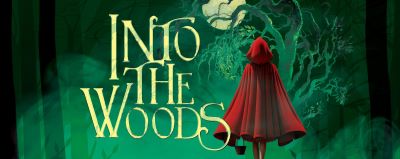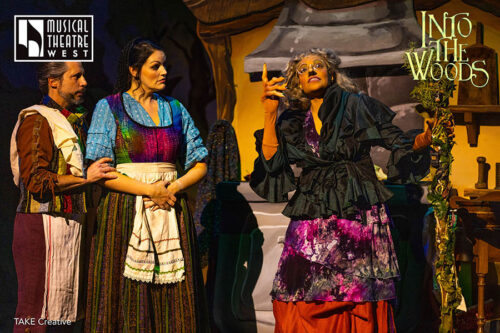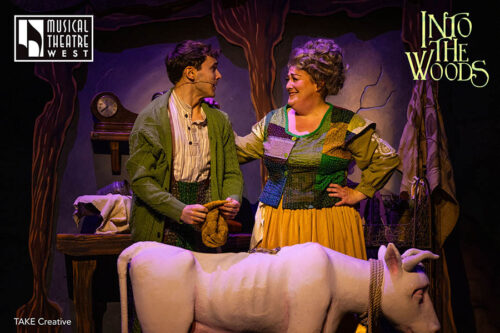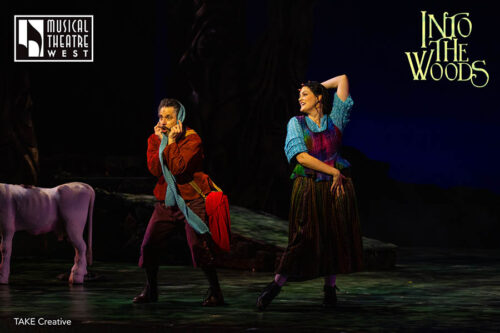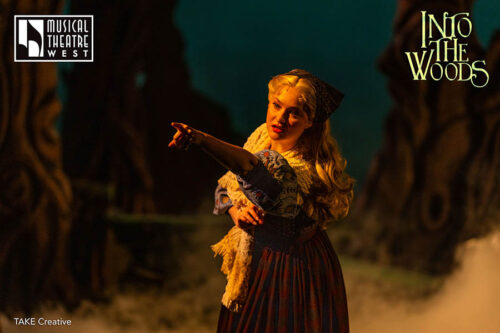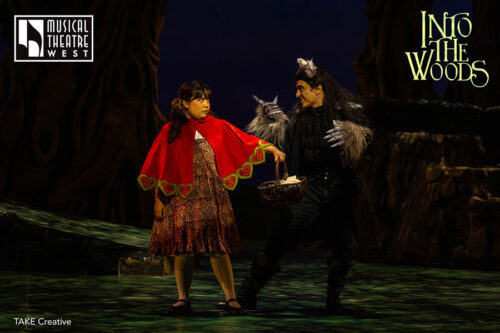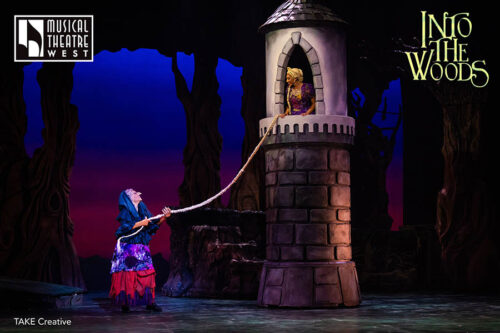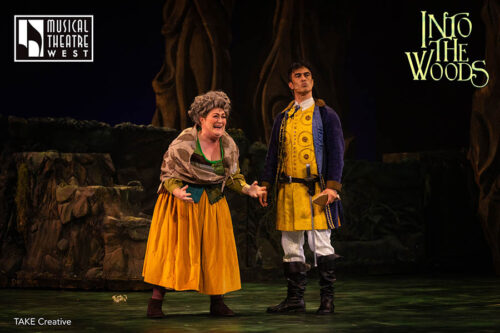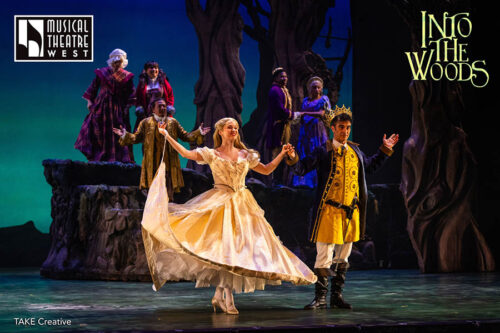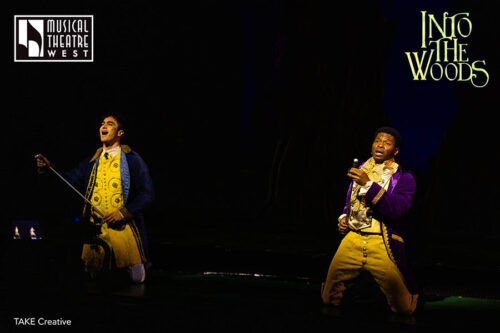THE FAIRY TALES BREAK–
AND THAT’S THE POINT
The stories are still here. Cinderella. Jack. Little Red. Rapunzel. A Baker and his Wife, tangled in a curse and each other. Into the Woods has always worn its source material like a costume—but it keeps a blade tucked underneath. Musical Theatre West’s new production doesn’t sharpen that blade. It simply lets you feel the cut.
When the show premiered in 1987, it looked like bedtime. The familiar characters. The enchanted forest. The playful patter. But anyone paying attention could hear the trap door creaking. Stephen Sondheim (score) and James Lapine (book) weren’t telling fairy tales. They were taking them apart—testing their hinges, watching them fall in on themselves. There’s no real “happily ever after.” Just fallout.
At the time, audiences read the second act’s spiral—its sudden deaths, the existential blur, the rising dread—through the lens of the AIDS crisis. Whether or not that was authorial intent is beside the point. The grief stuck. It worked its way into the show’s DNA.
Decades later, that grief hasn’t left. It’s just taken on a different temperature. Less epidemic, more atmospheric. A background hum of unease. Director Kari Hayter doesn’t try to update the show into relevance—she doesn’t have to. She trusts the piece to carry its weight. It does. It moves like something that knows it’s haunted.
And that trust pays off. Hayter avoids the “bare stage” trend that characterized the last two New York revivals, opting instead for a production with depth and shadow. The sets, borrowed from 3-D Theatricals, are textured and uneasy. Not storybook. Not spooky. Just… off. A forest that forgot it was ever supposed to be magical. Brandon Baruch’s lighting helps sell the unease. It’s not decorative. It’s destabilizing.
Act One comes on light. Four magical objects. A curse to break. Characters crossing paths in search of something they can’t name. But the sweetness has an edge. Jack’s bond with his cow feels uncomfortably codependent. Little Red, all snarl and sugar, might be more predator than prey. Cinderella runs not because she’s shy—but because she’s never been taught how to stay. These aren’t just re-imagined characters. They’re people trying to survive inside stories that stopped making sense.
By Act Two, the floor is gone.
The cast, all strong singers, mostly meet the show on its terms. Derek Manson’s Baker feels off-balance from the beginning, which gives his collapse a certain inevitability. When he reaches his second act ballad, “No More,” it’s not an epiphany. It’s a quiet surrender. He stops pretending he understands what’s happening—and that’s the breakthrough.
Madison Claire Parks plays Cinderella with clear intelligence and a refusal to romanticize the role. Her soprano is bright, her performance grounded. She doesn’t act like someone chasing a dream—she acts like someone realizing the dream was a trap. It’s clean, subtle, and the standout of the night.
Richard Bermudez plays the Prince and the Wolf as variations on a theme: seductive, hollow, perfectly groomed. Both work, precisely because they aren’t played with a wink. Cayman Ilika brings the Baker’s Wife down to earth, balancing quick wit with weariness. She gets laughs without playing for them, and ache without indulging it.
Then there’s the Witch.
Daemeon Poiema has the voice. That’s not the problem. “Last Midnight,” sung with an R&B inflection, sounds gorgeous. But her overall interpretation is cartoonish—too much villain, not enough vulnerability. The Witch isn’t evil. She’s the show’s argument: grief as fury, love as control, damage as defense. The role needs to be played from the inside out. Here, it’s mostly outside. The lines land. The laughs land. But the hurt doesn’t.
Even so, the show holds.
Under Anthony Zedicker’s baton, the music breathes. The score isn’t smoothed out or sweetened. It lurches and spirals and occasionally stuns. Rhythms collide. Melodies drift into dissonance. The musicians understand that this isn’t bedtime music—it’s what plays after the lights go out.
And when it ends, it doesn’t tie things up. It leaves them dangling. “Children Will Listen” doesn’t sound like a lullaby. It sounds like a warning. Not triumphant. Not tragic. Just… unfinished.
Most productions treat Into the Woods like a fairy tale with unexpected depth. This one treats it like a mirror with cracks. The question it asks isn’t “Who gets their happy ending?” It’s “What do we do when the story breaks, and the woods just keep going?”
Despite my reservations about the Witch’s portrayal, I recommend this production. It’s thoughtful, unafraid, and more emotionally honest than most. It doesn’t chase answers. It just walks beside you through the trees—and trusts you’ll know the way out. Or at least, feel something when you realize you don’t.
photo by TAKE Creative
Into the Woods
Musical Theatre West
Carpenter Performing Arts Center, 6200 Atherton St. in Long Beach
ends on July 21, 2023
for tickets, visit visit Musical
for more shows, visit Theatre in LA
